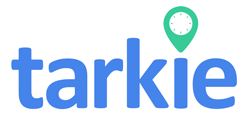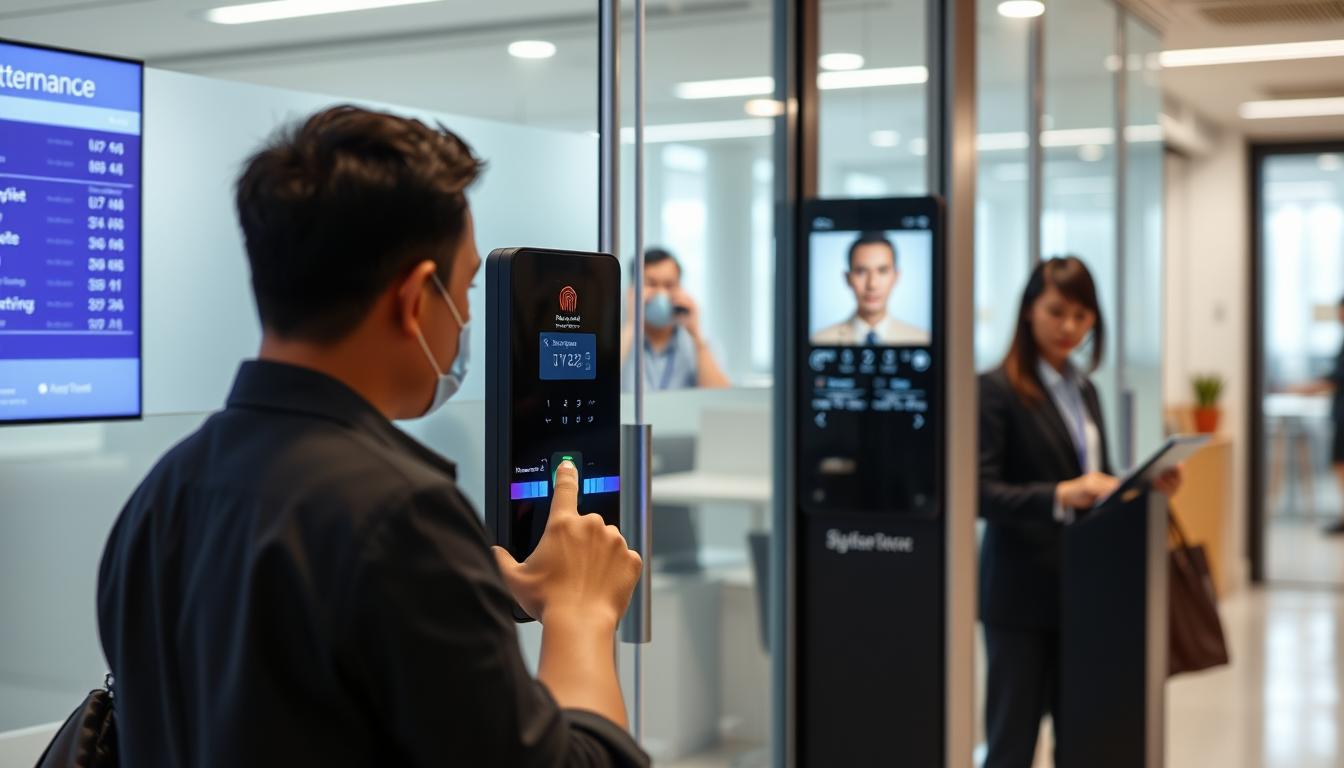Ever thought about how much time and resources your SME could save with a good attendance system? In today’s fast world, small and medium businesses in the Philippines need to track employee hours well. A good system boosts productivity and keeps you in line with labor laws, which is key.
This article will help you pick the best attendance system for your business. We’ll look at key features, success stories in the Philippines, and how modern solutions can help. Get ready to change how your business handles attendance!
Key Takeaways
- Attendance systems can reduce administrative workload by up to 50% compared to manual tracking.
- Automated time tracking features significantly enhance accuracy in recording working hours and absences.
- Integration with payroll systems can eliminate up to 90% of data entry errors.
- Cloud-based solutions allow for consistent access to attendance data while ensuring data security.
- Employee self-service portals can boost engagement by giving staff autonomy over their attendance records and time-off requests.
- Biometric technology can substantially reduce the issue of buddy punching and other attendance discrepancies.
- Real-time data capabilities allow for quicker responses to absenteeism issues, improving overall productivity.
Introduction to Attendance Management Systems
Attendance management systems are key for small and medium businesses today. They make tracking employee hours easy and accurate, cutting down on paperwork. With attendance management software, companies can automate tracking and see a 40% boost in efficiency.
A good digital attendance system has time clocks, biometric devices, and software for handling data. It works well with HR tools like payroll. This setup helps businesses improve productivity and accuracy.
Using a full attendance management system can make payroll up to 30% more accurate. It also helps with fraud and keeps records safe. Biometric systems cut down attendance fraud by over 50%, making work more honest.
More and more businesses are moving from old ways to new tech. Now, 78% of them use systems that make work better. These tools help small and medium businesses manage their teams well and grow.
For more on how to use these systems, check out this resource.
Why Your SME Needs an Attendance System
As your SME grows, managing employee attendance gets harder. An attendance system makes this easier. It cuts down on mistakes and saves time, boosting enhance productivity in your company.
It also helps follow labor laws better, avoiding expensive legal problems. Old ways of tracking can lead to payroll errors, upsetting employees. With an automated system, your SME can clearly set attendance rules, creating a fair work environment.
Managing time off gets better with automated systems. They alert managers about absences and avoid scheduling problems. The American Society of Employers says time theft hurts U.S. businesses a lot. Using GPS and geofencing stops fake time entries, keeping records accurate and improving compliance.
Getting an attendance management system saves money on admin tasks. Cloud-based systems let HR teams work on important tasks. This move boosts productivity and makes employees happier, improving company culture. Plus, it pays off in just six months, which is great for SMEs.
Good employee attendance management makes your business run smoother. Automation makes payroll easier as your business grows. It helps keep teams focused and productive.
To learn more about boosting productivity, check out different ways to measure and improve your team’s efficiency here.
Key Features of an Effective Attendance System
For small and medium enterprises (SMEs), picking the right attendance system is key. A good system has features like automated tracking, payroll integration, and employee portals. These help boost productivity.
Automated Attendance Tracking
Automated tracking cuts down on mistakes and boosts efficiency. It uses biometric systems to track attendance accurately. This stops time theft and keeps records right.
It also alerts managers about overtime, helping control costs. With real-time data, companies can better manage their biggest expense.
Integration with Payroll Software
Working well with payroll software is essential. It helps avoid errors in wage calculations. Cloud-based systems are cheaper, easing the financial load on SMEs.
This integration makes payroll accurate and saves HR time. It’s a big help for companies.
Employee Self-Service Portals
Employee portals let staff manage their own data and leave. This cuts down HR work and boosts morale. Studies show it makes employees feel more responsible.
It also helps find ways to improve attendance. This leads to better productivity and happier employees.
Factors to Consider When Choosing an Attendance System
Choosing the right attendance system is key for SMEs. You need to think about your industry, how many people work for you, and how easy it is to use. These factors help you pick the best system to manage attendance and improve productivity.
Your Industry’s Unique Needs
Every industry has its own needs. For example, field services might need GPS tracking. The hospitality sector might want tip tracking. Picking a system that fits your industry helps you follow rules and work better.
Number of Employees
The number of employees affects your choice. Small teams (under 50) might just need the basics. But teams growing to 50-100 might need more features. A good system helps with payroll and keeps employees happy.
Ease of Use and Accessibility
Systems that are easy to use get adopted faster. Features like mobile clock-in and drag-and-drop scheduling make things easier. Clockify and Homebase are great examples. They make it simple for employees to get started, saving time and reducing mistakes.
| Attendance System | Key Features | Starting Price |
|---|---|---|
| Deputy | Mobile access, scheduling | $2.50 per user per month |
| Homebase | Clock-in/out, team messaging | $20 base fee + $2 per employee |
| TSheets | GPS tracking, overtime alerts | $5 per user per month |
| TimeClock Plus | Customizable PTO, reporting | $1.25 per user per month |
| Open Time Clock | Unlimited users, employee scheduling | $39 per company per month |
Assessment of Available SME Solutions
Finding the right attendance management solutions for SMEs is key for smooth operations. The market has many strong attendance systems made for small and medium-sized businesses. It’s important to look at features, pricing, and how easy they are to use.
Top Attendance Management Systems for SMEs
Some top attendance management systems for SMEs include:
- Clockify: Great for tracking projects and managing time well.
- Buddy Punch: Has real-time monitoring for accurate attendance records.
- Workstem: Allows customizing attendance rules and offers detailed reports.
Comparative Analysis of Features
Looking at different attendance management solutions can show their strengths. Here’s a table comparing key features of some systems:
| Attendance System | Automated Tracking | Payroll Integration | Custom Reports | Real-time Monitoring |
|---|---|---|---|---|
| Clockify | Yes | No | 100+ Types | Limited |
| Buddy Punch | Yes | Yes | Varies | Yes |
| Workstem | Yes | Yes | Includes 418 Checking | Yes |
When choosing attendance management solutions, think carefully about their features and how they fit your business goals. Switching to effective attendance systems can greatly improve tracking employee hours and boost productivity.
How to Choose Attendance System That Fits Your Business
Choosing the right attendance system is important. You need to think about your business goals and budget. Knowing what your company needs helps you find the best solution.
Identifying Business Priorities
When picking an attendance system, think about accuracy, following labor laws, and keeping employees happy. Accurate time tracking helps avoid payroll mistakes. In fact, 70% of small to medium businesses struggle with payroll errors because of manual methods.
A good system helps follow labor laws better. It can even help you reach a 75% compliance rate. Plus, it can cut down on administrative work by about 60%. This frees up time for more important tasks.
Budget Constraints
When budgeting for an attendance system, look for affordable options with key features. For example, combining payroll software with attendance tracking can save 25% on payroll time. This makes work more efficient and boosts employee happiness by 50%.
Trying out free trials can help you see which features fit your budget and needs best.
| Attendance System | Rating (Capterra) | Key Features |
|---|---|---|
| Buddy Punch | 4.8 | Mobile access, payroll integration, GPS tracking |
| Clockify | 4.7 | Time tracking, project management |
| When I Work | 4.5 | Employee scheduling, mobile clocking |
| Jibble | 4.9 | NFC clocking system, quick attendance logging |
Using a good attendance system helps make better decisions. It aligns with your business goals and budget. By focusing on what’s important and understanding costs, small to medium businesses can find the perfect attendance solution.
Implementing Your Chosen Attendance System
Putting an attendance management system in place requires careful steps. It’s key to involve employees in choosing the system. Their input helps make it fit your company’s needs. A pilot test can spot problems before you roll it out fully.
After picking a system, training employees is crucial. It ensures they use it right and helps avoid mistakes during the change.
Steps for Successful Implementation
- Involve employees in the selection process to gather valuable feedback and preferences.
- Conduct pilot testing to identify and resolve potential challenges early.
- Establish clear communication channels to outline the implementation process.
- Allocate resources for ongoing support to assist during and after the transition.
- Set up feedback loops for continuous improvement post-launch.
Training Employees on New Systems
Training employees well is key for a smooth launch. Sessions should teach how to use the system, its features, and solve common issues. Use different training methods like workshops and online tutorials to reach everyone.
Systems that are easy to use lead to better adoption. So, give clear instructions, FAQs, and ongoing support. This helps cut down errors and boosts productivity.
Benefits of Biometric Attendance Systems
Biometric attendance systems bring many benefits to small and medium enterprises (SMEs). They solve problems found in old tracking methods. These systems offer precise and reliable attendance management.
Accuracy in Time Tracking
Using a biometric attendance system makes time tracking very accurate. It ensures attendance records show real working hours. With up to 99% accuracy, these systems cut down errors from manual entries.
They use advanced tech like fingerprint or facial recognition. This leads to a 30% drop in payroll mistakes from old attendance methods.
Preventing Time Theft with Biometric Technology
Time theft is a big problem in many workplaces. Biometric systems can cut it down by more than 50%. They stop issues like buddy punching and proxy attendance.
They also improve security and make workplaces fairer. Businesses see a 3% to 5% drop in labor costs. This is thanks to better attendance tracking and payroll accuracy.
Cloud-Based Attendance Solutions for SMEs
Cloud-based attendance solutions are great for small and medium enterprises (SMEs). They help keep up with today’s work demands. These systems make it easy for teams to work from anywhere, using phones or computers.
Employees can clock in and manage their schedules easily. This makes the workforce more productive.
Access and Flexibility for Remote Teams
With more people working from home, tracking attendance is key. Cloud-based solutions let employees log hours from anywhere. This keeps business leaders in the loop.
This flexibility boosts productivity. Companies can see a 31% increase in efficiency with automated attendance. It also helps employees stick to their schedules, cutting down on absences.
Data Security Considerations
When choosing a cloud-based attendance solution, data security is crucial. SMEs must protect employee information. They need to follow strict data protection rules.
Good providers use top-notch security to keep data safe. This not only protects employee info but also helps companies avoid big fines. Fines for not following labor laws can be as high as 60% for small businesses.
| Feature | Benefits |
|---|---|
| Remote Access | Enables logging hours from anywhere, enhancing flexibility. |
| Enhanced Data Security | Protects sensitive information and ensures compliance with regulations. |
| Increased Productivity | Can lead to up to a 31% improvement in efficiency through automation. |
| Streamlined Payroll Processing | Aids in minimizing payroll discrepancies and administrative workload. |
By using a cloud-based attendance solution, SMEs can work better and safer. This leads to happier employees and successful operations.
Case Studies: Successful Implementations in the Philippines
Looking at how attendance management systems work in the Philippines shows us how companies can improve. Many businesses have started using these systems. They’ve seen big changes in how they track who’s there and how they handle payrolls.
Philippine Companies Adopting Attendance Systems
Studies show that companies in various fields, like retail and education, have added automated attendance systems. They’ve noticed some key benefits:
- Less work for administrators
- Staff are more productive
- Attendance records are more accurate
- They meet labor laws better
Measurable Improvements After Implementation
Many companies have shared their positive experiences with new attendance systems:
| Metric | Mean Rating |
|---|---|
| Efficiency of the existing attendance system | 3.19 |
| Satisfaction with the existing attendance system | 3.11 |
| Current system’s influence on minimizing errors | 3.53 |
| QR code technology benefits in speeding up attendance | 3.66 |
| Convenience of the QR code system | 3.77 |
Also, digital systems have cut down errors to less than 2%. They’ve also made students 20% less late in the first year. This is a big step towards making attendance tracking better and supporting flexible work hours. Companies aiming for better accuracy and efficiency can learn a lot from these examples.
The Future of Attendance Systems
The world of attendance management is changing fast. New technologies and shifts in the workforce are driving these changes. To keep up, companies need to know about the latest trends in attendance systems. The future holds innovative solutions that use advanced analytics and automation to make things easier.
Trends in Attendance Management Technology
Businesses are now using AI and machine learning to improve their attendance systems. Predictive analytics will help them forecast who will be where and when. This way, they can plan better and use resources more efficiently.
Companies that use these tools are seeing great results:
- Active Users: 500K+
- Hours Tracked: 21M+
- Increased ROI: 30%+ for a Delhi-based startup using Workstatus
- Remote Work Accountability Increase: 30%
- Hybrid Work Productivity Increase: 40%
- Office Work Productivity Enhancement: 35%
Adapting to New Workforce Dynamics
The workforce is changing, and so are the rules. Companies need to adapt to remote and hybrid work. This keeps employees engaged and productive.
They must use systems that track attendance accurately. This reduces mistakes like buddy punching. Biometric attendance technologies will be key in achieving this.
As companies value data security and efficiency more, investing in advanced systems will be crucial. This will shape the future of attendance management.
| Attendance System | Average Pricing/User/Month | User Ratings |
|---|---|---|
| Hubstaff | $7 | 4.8 |
| Truein | $4.55 | 4.6 |
| Time Doctor | $11 | 4.5 |
| Monitask | $5 | 4.8 |
| Clockify | $7 | 4.6 |
Conclusion
Choosing the right attendance management system is key for SMEs to work better and follow labor laws. More businesses are moving from paper to digital systems. This change brings better accuracy and productivity.
These systems help keep an eye on attendance and make quick decisions with up-to-date data. This is very important in today’s fast world.
Many companies have seen fewer mistakes and less work after using automated systems. They focus on easy-to-use features and work well with HR systems. This makes processes smoother, saving time and improving employee happiness.
By choosing the right attendance systems, companies invest in their future. This is a smart move for long-term success.
As SMEs use new technologies and cloud-based solutions, they manage their teams better. Those who pick the right attendance management see better compliance, security, productivity, and morale. Access to new solutions is crucial for Filipino businesses to succeed in a changing world.




